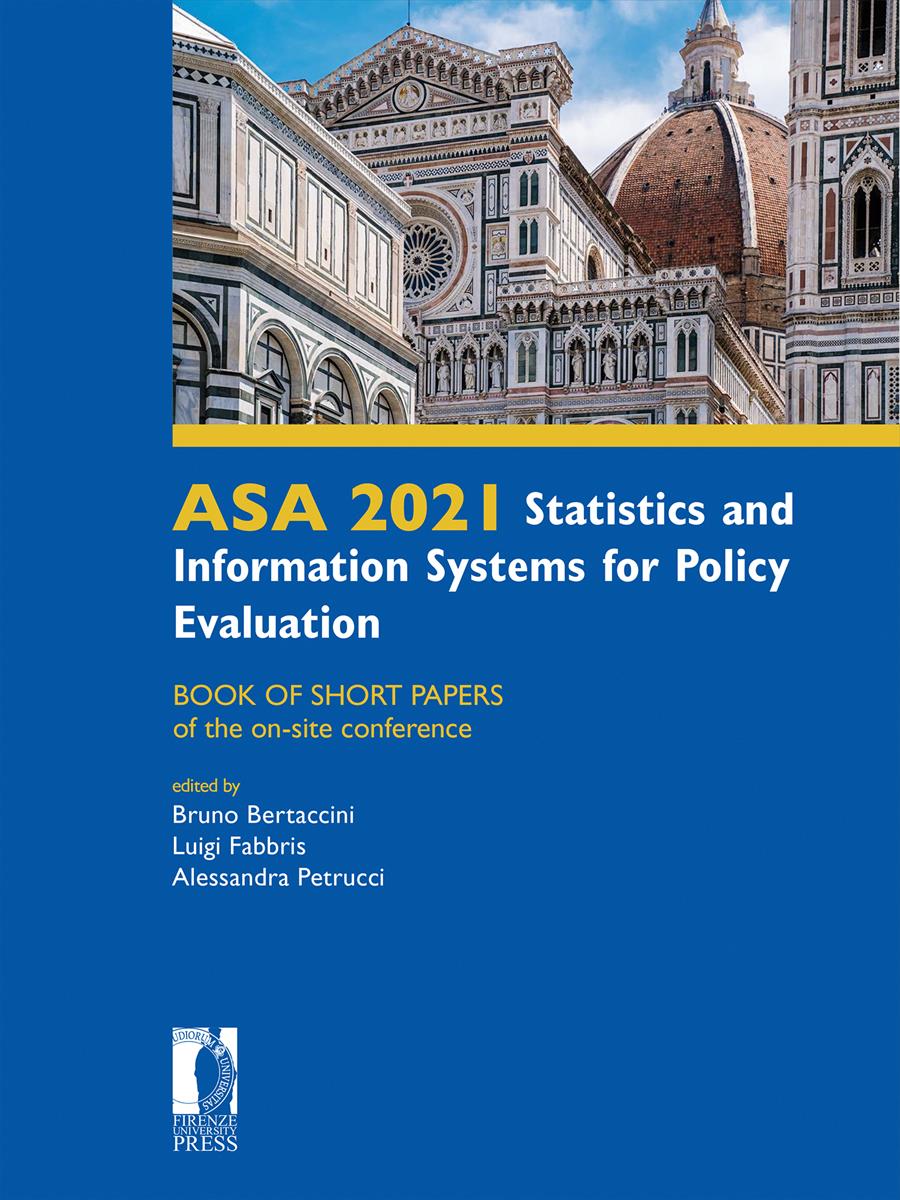- ASA 2021 Statistics and Information Systems for Policy Evaluation
- Edited by Bruno Bertaccini, Luigi Fabbris, Alessandra Petrucci
Personal weaknesses recognized by high school students in the North-West of Italy
- Luigi Bollani
- © 2021 Author(s) |
- CC BY 4.0
- DOI: 10.36253/978-88-5518-461-8.11
This study is part of a project aimed at supporting the weaknesses of young people who are experiencing, or are at risk of reaching, NEET condition (Not in Education, Employment or Training; aged between 15 and 29 or 34, according to different definitions). The first signs of the extreme discomfort caused by Neet condition were sought by investigating signs of weakness in high school students in the Piedmont, Valle d'Aosta and Liguria regions. Of course students as such are not Neets and the anonymity required for a survey dealing with very personal issues does not allow a longitudinal study to be carried out on the same individuals. However, the construction of a comparison base referring to a generic population, relative to the incidence of certain states of weakness (or some of their combinations), will allow for a subsequent comparison with the incidence of the same difficulties in school age for those who find themselves in a Neet situation. A survey questionnaire was administered to 931 students, an operator being present in the classrooms, shortly before the start of the pandemic. Collected results will therefore be more directly linked to school activities "in presence", even if discontinuities in teaching methods and characteristics caused by the pandemic might have brought in alterations that will need to be monitored over time.
- Keywords:
- social survey,
- high school,
- social weakness,
University of Turin, Italy - ORCID: 0000-0002-2488-3659
- Abdi, H.; Valentin, D. (2007). Multiple correspondence analysis, ed. N. Salkind, Encyclopedia of Measurement and Statistics, Sage Publications, Thousand Oaks, (CA), 95, pp. 116-128.
- AA.VV. (2020). From Neet to Need. Il cortocircuito sociale dei giovani che non studiano e non lavorano, eds. G. Lazzarini, L. Bollani, F. S. Rota, M. Santagati. Innovation Creativity Settings, Franco Angeli, Torino.
- Benzécri, J.P. (1973). L’Analyse des Données. Dunod, Paris.
- Bollani L., Rota F.S. (2018). Orientamenti per una comprensione ecosistemica dei NEET e conseguenti politiche di sostegno, EyesReg, 8,2.
- Escofier, B., Pagès, J. (2008). Analyses Factorielles Simples et Multiples: Objectifs, Méthodes et Interprétation; Dunod, Paris.
- Greenacre, M. (2017). Correspondence Analysis in Practice; Chapman and Hall, New York.
- Merril B., West L. (2012). Metodi biografici per la ricerca sociale, Apogeo.
- Nenadic, O., Greenacre, M. (2007). Correspondence analysis in R, with two-and threedimensional graphics: The ca package. Journal of Statistical Software, 20(3), pp. 1-13.
Chapter Information
Chapter Title
Personal weaknesses recognized by high school students in the North-West of Italy
Authors
Luigi Bollani
Language
English
DOI
10.36253/978-88-5518-461-8.11
Peer Reviewed
Publication Year
2021
Copyright Information
© 2021 Author(s)
Content License
Metadata License
Bibliographic Information
Book Title
ASA 2021 Statistics and Information Systems for Policy Evaluation
Book Subtitle
BOOK OF SHORT PAPERS of the on-site conference
Editors
Bruno Bertaccini, Luigi Fabbris, Alessandra Petrucci
Peer Reviewed
Publication Year
2021
Copyright Information
© 2021 Author(s)
Content License
Metadata License
Publisher Name
Firenze University Press
DOI
10.36253/978-88-5518-461-8
eISBN (pdf)
978-88-5518-461-8
eISBN (xml)
978-88-5518-462-5
Series Title
Proceedings e report
Series ISSN
2704-601X
Series E-ISSN
2704-5846
